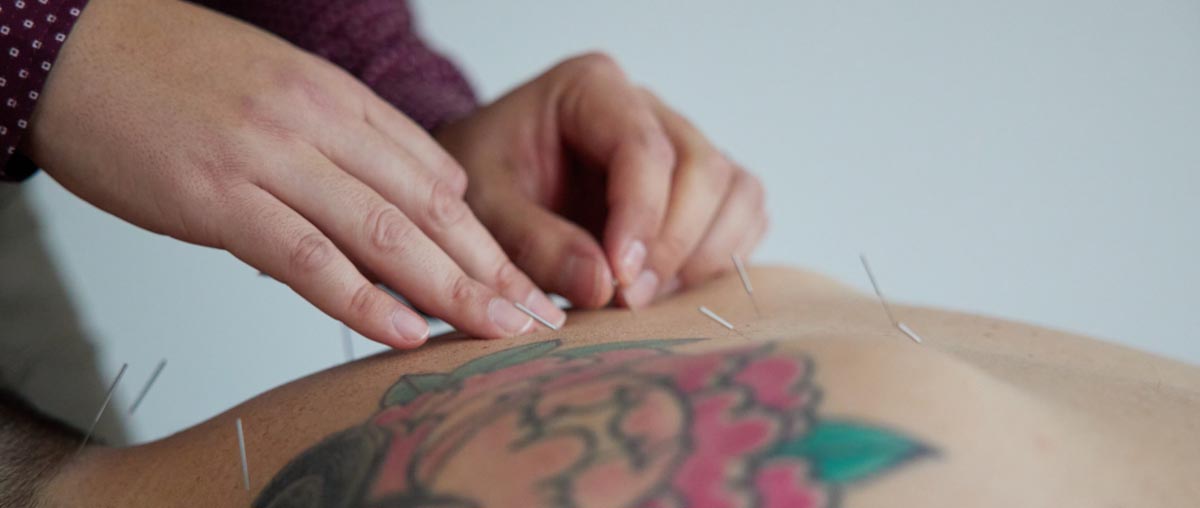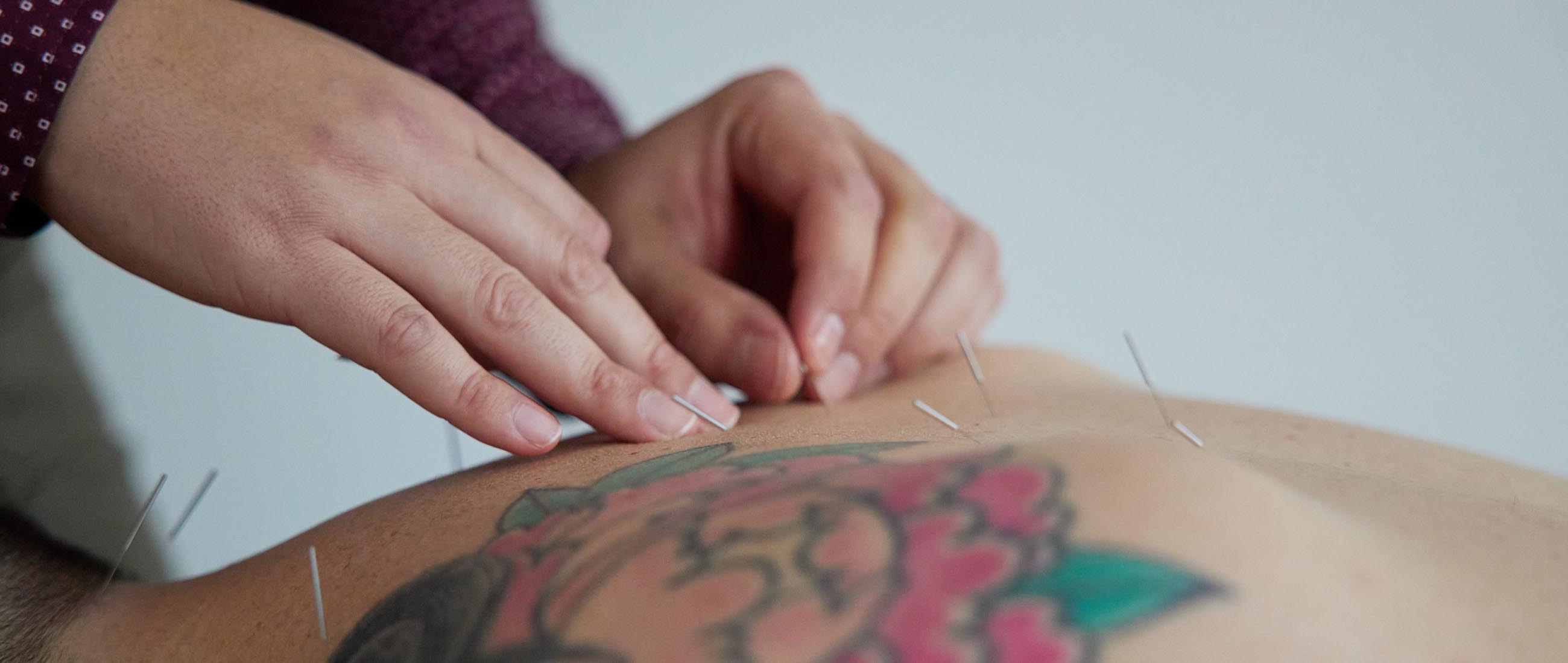
Acupuncture
Acupuncture has been practiced for over 2,000 years, and has branched into many rich lineages. Some acupuncture styles we practice are hundreds of years old, others incorporate contemporary scientific information. Below are all the acupuncture styles in which our MHS practitioners have special training. You don’t have to know what style you need (that’s our job!); the most important thing is that the acupuncture you receive works for you.

Acupuncture
Acupuncture has been practiced for over 2,000 years, and has branched into many rich lineages. Some acupuncture styles we practice are hundreds of years old, others incorporate contemporary scientific information. Below are all the acupuncture styles in which our MHS practitioners have special training. You don’t have to know what style you need (that’s our job!); the most important thing is that the acupuncture you receive works for you.
Acupuncture for Pain Management
Pain management is probably the most well-known reason people seek out acupuncture. Acupuncture has been used to relieve pain for at least 2 millennia and is speculated to have been used in the ancient world as early as 2500 BCE. Acupuncture for pain management has also been the subject of extensive scientific studies in modern times with 441,000 results in google scholar as of 2024.
Acupuncture is becoming more common in the West as a standard option for pain management, with more awareness in the general public and the medical community, as well as more scientific evidence showing the effectiveness of acupuncture for pain management. With doctors and the medical community looking for effective ways to treat and manage pain with low risk for negative side effects, especially in the context of the opioid crisis, many have been turning to acupuncture as the primary way of dealing with pain.
Because acupuncture is so widely studied, we now understand many of the mechanisms and effects of acupuncture in a modern medical context. Acupuncture has may affects including increasing circulation, lowering inflammation, lowering stress, increasing nerve conduction, decreasing electrical resistance on the skin, relaxing connective tissue, and more. We believe the reason acupuncture is effective for so many types of pain is due to the positive effect on so many of these systems.
Japanese Acupuncture
Acupuncture has been used and refined for several thousand years in Japan. After WWII many Japanese Acupuncturists incorporated Western medical physiology into their practices, combining the best of the East and the West to create a new style of Acupuncture. This style extensively uses palpation of the body to verify diagnosis, point location and factors contributing to the condition. The thinking process switches from Eastern to Western theories easily, providing a more complete understanding of the underlying factors causing any pathology. Because the point location is so precise, the needling style is gentle, the needles are the smallest used in Acupuncture and the results are usually experienced by the patient during the treatment.
Saam Acupuncture
Saam acupuncture is a Korean acupuncture style originating from the 1700s. Treatments focus on addressing the most essential qualities causing one's imbalance or pain. Though Saam acupuncture may appear simple – most treatments use just four needles! – the physical, emotional, and energetic effects can be surprisingly profound. A correct treatment is immediately calming, and often provides clear, fast, lasting improvements in symptoms.
Studies have shown that Saam acupuncture's effectiveness may be due to its varying mechanisms of action that promote homeostasis within a whole person: activating the brain cortex, regulating heartrate, or balancing the sympathetic ("fight or flight") and parasympathetic ("digest and rest") nervous systems. Saam acupuncture treatments use very specific needling techniques that can have stronger needle sensations than Japanese-style acupuncture.
Motor Point Acupuncture
Motor Point Acupuncture is a form of acupuncture in which a needle is inserted directly into the muscle’s innervation region. When this technique is applied correctly, the patient often experiences a muscle fasciculation (twitch response) followed by an almost immediate loosening of the muscle if tight, or proper engagement of an inactive muscle group. Motor point acupuncture is great for treating pain, and also benefits inactive or weak muscles as is often the case after injuries or during rehab.
Five Element Acupuncture
Five Element Acupuncture is a style of acupuncture developed in mid 20th century England by Professor JR Worsley and is based on the ancient principals of Classical Chinese medicine. Treatments are focused on the alignment of body, mind, and spirit via what is known as a person's "Causative Factor," the central place from which each person lives their life. Each CF is assigned to a particular element in the Chinese 5 Element system: fire, earth, metal, water, and wood. The CF is determined by practitioners from a specific set of diagnostic criteria, namely the way a person looks, sounds, their individual set of symptoms, and the emotional threads that weave throughout their lives.
Primarily a treatment that has its greatest strengths addressing emotional health, the premise of 5 Element Acupuncture is that all illness arises when our spirit (or those inherent human characteristics that are separate from our bodies) is not fully integrated with our lives. This lack of integration is what causes imbalances in our emotional and physical bodies and is the root of all modern disease. 5 Element treatments are generally simple, needles can be retained for a time-period or simply be inserted and quickly removed; these treatments are deeply relaxing.
Yuan qi Acupuncture
Yuan qi Acupuncture is taught in the U.S. primarily by Dr. Suzanne Robidoux. Originating from select teaching lineages in China and Taiwan, Yuan Qi acupuncture is a very effective style primarily used for pain relief. It uses 60 points found in locations different from the usual acupoints known in Traditional Chinese medicine. It is based on Classical Chinese medicine theories, connecting the 5 elements, 6 levels, and meridian theory into correspondences that can be applied to any region of the body. Results can be instantaneous if the correct set of points is utilized.
Microacupuncture
Microacupuncture is a fairly new system of acupuncture developed in Denmark in the 1980s. It is the main therapy we use for the treatment of eye and vision disorders. Each Microacupuncture session uses 2-8 out of the 48 Microacupuncture points, which are all located on the palms of hands or soles of feet. Due to their locations, the points can be painful during needling, but quickly settle; treatments are then comfortable and relaxing.
Microacupuncture is useful for many degenerative or inflammatory eye conditions such as age-related macular degeneration (ARMD), glaucoma, retinitis pigmentosa, floaters, or dry eyes. We start with a 3-week treatment course of two to four 30-minute sessions per week, after which time we assess visual parameters. If Microacupuncture is helping, patients will notice clear improvements such as more visual clarity and color distinction, better night vision, fewer floaters, or decreased eye strain. Many people also have improvements in objective parameters such as eye pressure measurements or visual field tests. With clear improvements, the treatment protocol is re-evaluated, and patient and practitioner both decide whether the "intensive" treatment schedule should continue (typically up to 10 weeks total), or if vision health is stable enough for a maintenance schedule of 1-2 treatments per month.
Microacupuncture has not been found to be helpful for non-degenerative conditions such as near- or far-sightedness, nor injury-induced vision problems especially when there is scar tissue in the eye affecting vision.
Master Tung’s acupuncture
When the Chinese communist party established the People’s Republic of China in 1949, certain traditional aspects of Chinese medicine were suppressed, with some practitioners punished or imprisoned. A seasoned practitioner who had learned acupuncture through his family lineage tracing to the Han Dynasty (206 BCE to 220 CE), Master Tung (Tung Ching-Chang), fled to Taiwan and began teaching this very effective system of acupuncture, for the first time ever, to students outside of his family. His points are also known as “Tung’s magic points".
Master Tung's acupuncture points are unique because of their location—synergistic points found close together—and they strongly influence the body's fascia and connective tissue. Master Tung's acupuncture is completely different than Traditional Chinese medicine (TCM). TCM was systemized and streamlined in mainland China during that same time and is what's currently taught in China and the US. Master Tung's points have completely different names, functions and point locations when compared to TCM, and are highly effective especially for pain management.
